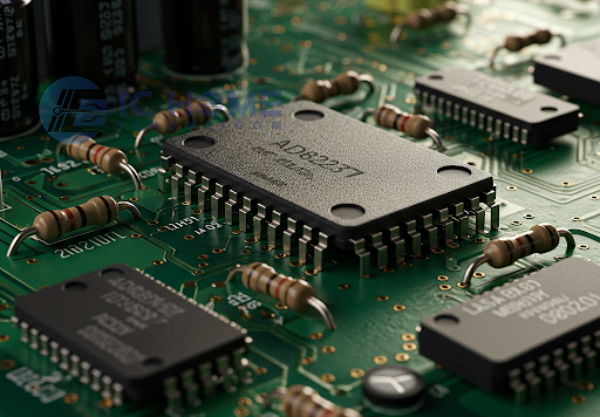Unveiling the Advantages of the ADI AD8237 Instrumentation Amplifier
In the precision world of analog circuit design, the instrumentation amplifier (INA) is one of the most critical components for signal conditioning. It plays a key role in amplifying low-level signals while rejecting unwanted noise and common-mode interference. Among the many INAs on the market, Analog Devices’ AD8237 stands out as a low-power, zero-drift, rail-to-rail input/output solution that’s particularly well-suited for designs requiring precision and simplicity. But what makes the AD8237 truly unique are two often-overlooked features that directly address common design challenges: its innovative REF pin architecture and wide common-mode voltage handling with rail-to-rail performance.

Why Designers Struggle with INAs: A Common Pain Point
When working with traditional instrumentation amplifiers, engineers must be mindful of two design variables: the allowable common-mode input voltage range (VCM) and the behavior of the reference (REF) pin, which determines the amplifier’s output baseline. In many INA designs, misjudging these two elements can result in unexpected saturation, degraded performance, or failed startup behavior—especially in low-voltage, battery-powered, or space-constrained systems.
Enter the AD8237: Designed to Avoid the Pitfalls
The AD8237 was engineered by Analog Devices to reduce the risk of these common design errors while delivering consistent performance across a broad range of applications. Let’s take a closer look at the two key innovations that set the AD8237 apart:
1. Flexible REF Pin Architecture: Simplifying Biasing
In conventional instrumentation amplifiers, the REF pin must be carefully buffered or level-shifted to control the output voltage’s baseline without affecting gain accuracy or stability. Improper handling of the REF pin can introduce errors or even destabilize the output.
What makes the AD8237 different is its internally buffered REF pin, which accepts a wide input voltage range and simplifies system-level integration. This allows designers to easily bias the amplifier output anywhere within the supply rails without needing extra components. For single-supply systems, where referencing the output to mid-supply is common, this feature is particularly beneficial. It helps eliminate external op-amps or resistor dividers that would otherwise increase board space and power consumption.
2. Rail-to-Rail Input and Output with Robust Common-Mode Tolerance
The AD8237 supports rail-to-rail input and output, ensuring full dynamic range in low-voltage environments (e.g., 1.8V or 3.3V systems). But more importantly, its architecture offers consistent performance across the entire common-mode input range—a common weak point in many INAs, especially when used with gain.
In many INAs, common-mode range narrows significantly as gain increases. However, the AD8237 maintains high linearity and low offset across its full specified VCM range, even at higher gains. This is particularly advantageous in bridge sensor applications, such as strain gauges or thermocouples, where signals often float within the common-mode region.
Combined with its zero-drift precision (low input offset and minimal temperature drift), the AD8237 is ideal for high-accuracy, low-power designs in industrial, medical, and portable sensing systems.
Application-Focused Design Advantage
From an engineer’s perspective, the AD8237 doesn’t just reduce component count—it reduces design risk. For procurement professionals, it offers a cost-effective solution with broad use cases, meaning inventory can serve multiple designs across departments. For system architects, it brings confidence that the signal path won’t compromise accuracy due to INA limitations.
And for distributors, the AD8237’s versatility—gain programmable from 1 to 1000 with just two resistors, rail-to-rail performance, and low quiescent current (~60 µA)—makes it a strong offering for customers seeking robust analog performance in compact designs.
Conclusion: Practical Innovation for Real-World Circuits
The AD8237 isn’t just another instrumentation amplifier—it’s a thoughtfully designed solution that addresses long-standing analog design headaches. With its internally buffered REF pin and robust handling of rail-to-rail I/O, Analog Devices has provided engineers with a tool that improves design reliability, reduces complexity, and saves board space.
Whether you're working on wearable medical devices, industrial monitoring systems, or portable sensors, the AD8237 offers a smart balance of precision, power efficiency, and ease of integration.




